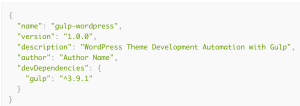Those who registered for YesSirNoSir, a new concierge-type of service for rich (err… I mean well-off) busy people, sadly lost five minutes of their time for nothing. Their laundry won’t be picked up and their kids won’t be driven to school by the non-existent chauffer.
The YesSirNoSir service does not exist, never did and never will. It was just a brand created on the Internet with the sole purpose of measuring the resonance of an online brand. And it left a lot of campaign managers wondering what they need to change in their campaigns.

Behind the Scenes of an eBranding Scam
The folks at Dynamic Logic, who created the brand, have every reason to be happy. By creating an online-only brand they managed to quantify the unquantifiable — the isolated branding effect on the Internet. Their idea came from a spoof billboard campaign in the 80’s, when the demand for billboard advertising began to fall. An advertising firm back then created the fictitious brand to show the power of billboard advertising.
Simon Andrews, MD of e-brands (who co-operated with Dynamic Logic) said that “it’s very easy to find something wacky to put in a fake campaign, but we wanted something that sounded reasonable … The product had to be interesting but not trendy.”
Given the current status quo with Internet advertising, even the biggest adspenders won’t invest too heavily in Web ads. According to Morgan Stanley Dean Witter, only three out of the top 50 adspenders in the US spend more than 1% of their advertising budget on the Internet: Microsoft spends (or invests) 19%, while K-Mart and Disney each spend 2%.
The YesSirNoSir experiment proved that the old ways of measuring the effectiveness of online advertising, like Click-Through Rates (CTR), do not represent the effect that a banner has on users. Therefore, the fact that the average CTR has dropped 25 times from 1994 to 2001 (10% to 0.4%, respectively) does not mean that the effectiveness of online advertising has decreased with the same rate.
How it Worked – and What it Proved
For the experiment, the Websites of FTMarketWatch and iVillage (both in Britain) gave away advertising space of around $80,000 USD. The Websites saw this act as an investment because, should the results prove to be positive, the market would grow considerably. And the results were positive:
 The number of people who claimed to have seen the brand although they really hadn’t was 1 in 25 (4%), which we shall call the control level. In layman’s terms, this percentage is normal and expected in market research because interviewees think that some answers are right, are in a rush, or simply tick the box nearest to their mouse. That’s why we regard this number to be our baseline.
The number of people who claimed to have seen the brand although they really hadn’t was 1 in 25 (4%), which we shall call the control level. In layman’s terms, this percentage is normal and expected in market research because interviewees think that some answers are right, are in a rush, or simply tick the box nearest to their mouse. That’s why we regard this number to be our baseline.
The percentage of those who recognised the brand and had in fact seen it was 11%, which shows a 275% increase from the baseline. So, a net 7% of people actually saw the advert, even if wasn’t a brand they immediately recognised. In measuring the effectiveness of the ad towards the brand’s pre-selected target audience (men between 18-49 years of age, with an annual income of $120,000 USD or more), it was found that 19% of all users remembered the advert. That’s an increase of approximately 475% (well, actually a bit less due to rounding of the figures).
After last year’s advertising success of X10.com with their peeping-tom videocams, some were lead to believe that the only way to have significant results is to drown all available channels with their adverts, and then measure the effectiveness of this approach. But this is also a sure-fire way to burn you brand, because the users who are repeatedly exposed to your messages will associate you with annoying adverts. After they’ve seen the X10 advert 5 times and maybe visited your site once, they’re not going to think twice about closing the ad down the next time it appears, are they?
The methodology of the YesSirNoSir experiment is as follows:
- the campaign lasted 6 weeks
- it had more than one size banners and resulted in 1.5 million impressions
- the average CTR was approximately 0.4%, 534 users of which registered on the YesSirNoSir Website
The research involved quite a large sample size, which made it credible (473 exposed and 200 for the baseline). For more information regarding the research, simply visit the YesSirNoSir Website.
A jack of all trades who brings results, with a genuine interest in IT and marketing, George is a resourceful freelance contractor in the UK.




